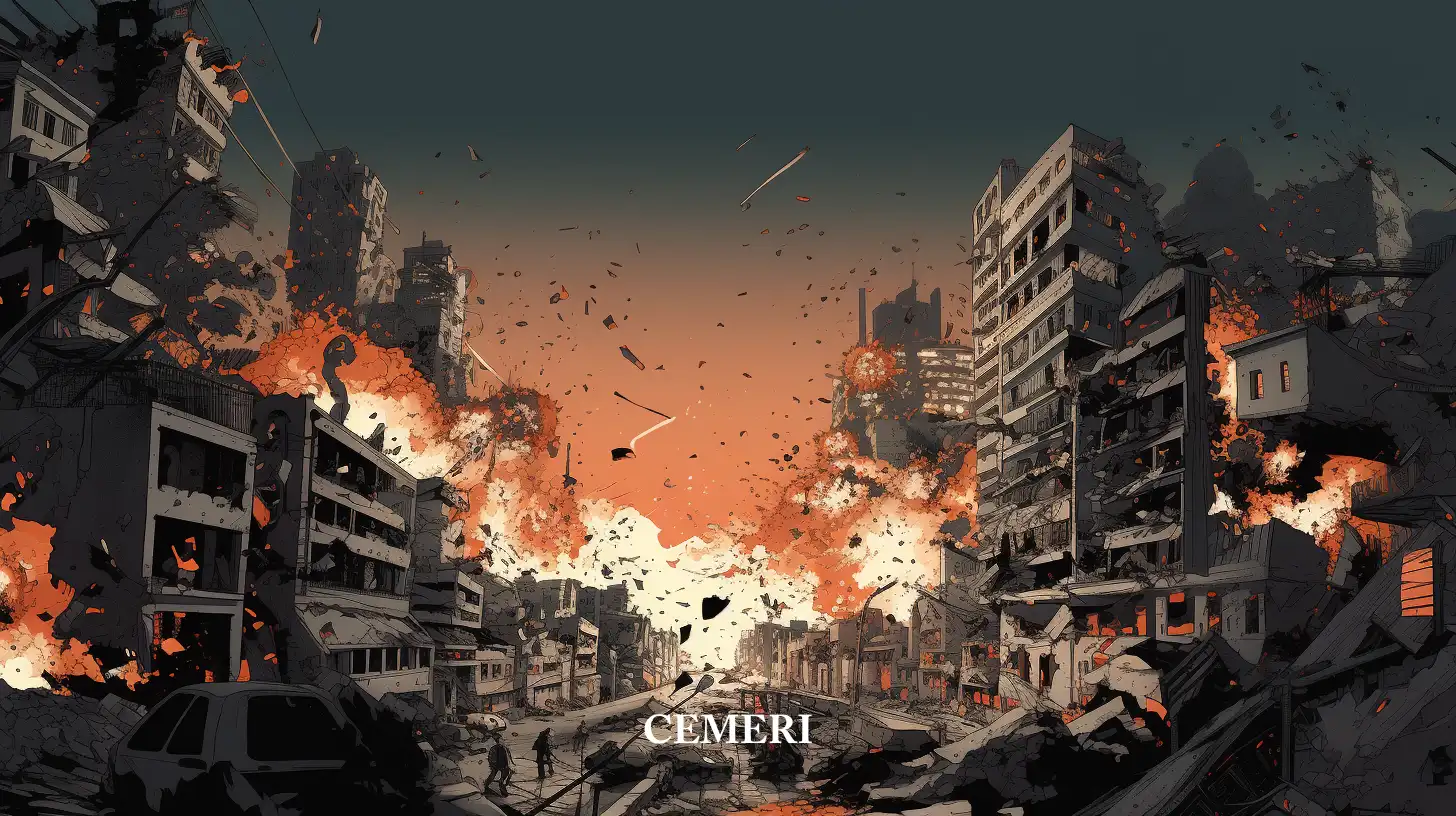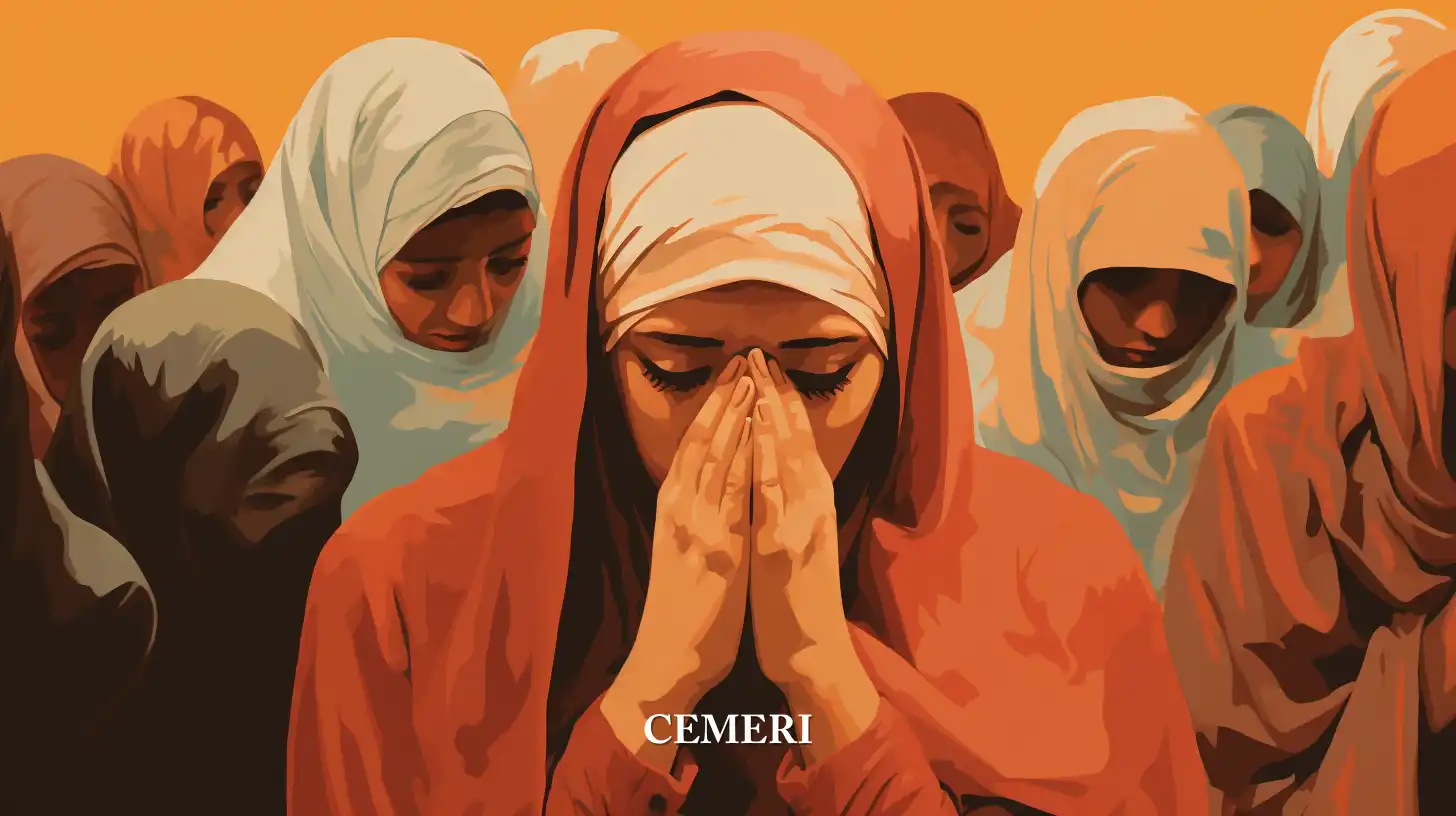Encyclopedia
Oween Barranzuela
What are Failed States?
- Because it is necessary to know such a complex concept before using it without meaning.

The endless war in Syria, the historic famine in Yemen and the deep humanitarian crisis in Somalia have revealed the inadequacy of States to face problems that threaten their security, as well as the fragility of the contemporary world order. These countries are part of the so-called Failed States, a concept that two decades after its appearance continues to have an unclear and confusing definition that has even been labeled as 'pejorative'.
During the Cold War the world witnessed a strategic and ideological confrontation between the West and the East. In order to expand their influence over countries and prevent them from becoming part of the opposing bloc, the United States and the Soviet Union provided aid to states located mainly in [North Africa and Western Asia](https ://cemeri.org/region/north-africa/) and Southeast Asia. With this aid, many States remained standing for a considerable period of years, for example, Somalia was one of the countries that received the most military and economic aid from the US in the region.[1]
The end of the Cold War and the appearance of Failed States have a cause-effect relationship. The international system of the post-Cold War meant a challenge for the governments of many countries, since by not receiving foreign aid they were unable to exercise their sovereignty and maintain their social and economic stability. In this context, the Failed States appear whose conceptualization, like other complex phenomena, was necessary to understand them in depth. Since then, the term has been present in various investigations that have debated not only the veracity of what was generally accepted as a Failed State, but also the possibility of using other expressions with similar meanings as interchangeable: States in crisis, Vulnerable States , States in decomposition or States collapsed.
In this sense, it is important to highlight the contributions of Gerald B. Helman and Steven R. Ratner, who were the first to write about this term. His article 'Saving Failed States' published in Foreign Policy magazine in 1992 [2] presents a mechanism for 'saving ' to what they described as failed states, that is, entities where the government has collapsed. At that time Liberia, Cambodia and, above all, Somalia were the central object of his study.[3]
For Helman and Ratner, failed states are entities that have failed in the fulfillment of their functions, which makes it impossible for them to act independently.[4] On the other hand, William Zartman considers that a State has 'collapsed' when it has stopped attending to its basic functions. Unlike the previous ones, he develops a broader idea of state failure based on Hobbes' theory of the social contract [5]. For Rotberg, states fail because they are convulsed by internal violence, in addition to the fact that their governments have lost legitimacy and the very nature of the nation-state in particular becomes illegitimate in the eyes of its citizens.[6] ]
Despite the fact that it has not been possible to have a concept that is free of ambiguities, it is possible to affirm that there is a point where they agree. Taking Max Weber as a reference, the researchers emphasize that Failed States are those that have completely lost the monopoly of legitimate violence over their territories. For Weber, the monopoly of violence is a fundamental characteristic of the State – which he defines as that human community that, within a certain territory (the 'territory' is a distinctive element), claims (successfully) for itself the monopoly of legitimate physical violence” (Weber, 1998, p. 82).
What are the indicators that we must consider to qualify a State as 'Failed'?
Clearly there is no concrete answer. Said condition is the result of a short or long-term process that encompasses certain factors taken into account by some and ignored by others when categorizing a state as 'failed'. López Martin, emphasizes the confluence of four fundamental elements that distinguish a failed State:
The breakdown of law and order occurs when state institutions lose their monopoly on the legitimate use of force and become incapable of protecting their citizens (or, worse still, are used to oppress or frighten them) .
The limited or null capacity to respond to the needs of its citizens, to provide basic public services and to ensure the minimum conditions of well-being and functioning of normal economic activity.
The absence of a credible entity that represents the State ad intra before its citizens; ad extra beyond its borders.
As a consequence of the foregoing or, precisely because of it, settlement of armed groups, cartels, mafias, militias, warlords who are the ones who really hold the monopoly on the use of force and act, in general instead of the state. [7]
To understand the term and make proper use of it, it is necessary to highlight the 'confluence' that López Martin emphasizes so much. For example, a candidate for the presidency of Peru stated in one of his statements that the Peruvian State was a 'Failed State' due to its inefficiency in purchasing vaccines against COVID-19. The weak role of the Peruvian State in decision-making to respond to an urgent need of citizens, such as vaccines, is not debated, but it is totally incorrect to call it a Failed State only for that element, since throughout the country this same maintains its political power and hegemony without sharing it with another unit. On the contrary, in countries like Yemen and Somalia, the weak response to basic services (with disability rates well above Peru) is added to the constant insecurity caused by groups that are fighting for power. Occurring at the same time, they have resulted in serious state failures.
Undoubtedly, the most recognized source worldwide is the 'Failed States Index' published by the American Think-Tank Fund for Peace (FFP) at Foreign Policy magazine since 2005. The FFP considers its index an essential tool to highlight not only the normal pressures all states experience, but also to identify when those pressures are pushing a state to the brink of failure. [8]
The methodology used by the FFP is based on the criticism of quantitative data sets, content analysis and qualitative analysis of experts, thus obtaining the final scores for the 178 countries evaluated. The classification of these countries consists of 12 indicators divided into 4 groups.[9]
Economic indicators
Part of questions like, What level is the public debt? What is the level of productivity?, among others. Thus, the indicator of economic decline analyzes the responses to economic conditions and their possible consequences. It focuses on both the formal economy and illicit trade, including drug trafficking. Added to this, the Unequal Economic Development indicator looks at structural inequality that is based on group (such as race, ethnicity, religion, or other identity group) or on education, economic status, or region (such as urban-rural divide). Lastly, the 'brain drain' indicator specifically measures the economic impact displacement can have on an economy through the loss of skilled and productive professional labour. Consider the voluntary emigration of the middle class, and the forced displacement of professionals or intellectuals.
Social indicators
The indicator of demographic pressures considers the pressures on the State derived from the population itself. The pressures are related to food supply, access to drinking water and also the prevalence of diseases and epidemics. Refugees and internally displaced persons is another parameter, which measures forced displacement due to various causes. It refers to the fact that the flow of population can exert additional pressure on public services, thus becoming a humanitarian challenge for the State. There is also the indicator of external intervention, at this point the impact of external actors (armies, governments, intelligence services) on the internal affairs of a state is taken into account. It also focuses on external economic support such as loans or external humanitarian aid from multilateral organizations.
Political indicators
Through the State legitimacy indicator, the representativeness and openness of the government is tested. It assesses the levels of trust of the population in state institutions and also takes into account the integrity of the elections and the development of political transitions. Also included is the Public Services Indicator, which refers to the capacity of States to provide essential services such as health and sanitation, and the protection of their citizens from threats such as terrorism or violence. Lastly, the human rights and rule of law indicator attempts to monitor human rights abuses and outbreaks of violence against civilians. This indicator analyzes the probabilities of the development of an authoritarian government that is current or that may emerge in the near future. [10]
In 2020, 178 countries were analyzed. Below is the list of the 10 countries that had the worst scores.
| Country | Year | Position | Score |
|---|---|---|---|
| Yemeni | 2020 | 1 | 112.4 |
| Somalia | 2020 | 2 | 110.9 |
| South Sudan | 2020 | 3 | 110.8 |
| Syria | 2020 | 4 | 110.7 |
| Democratic Republic of the Congo | 2020 | 5 | 109.4 |
| Central African Republic | 2020 | 6 | 107.5 |
| Chad | 2020 | 7 | 106.4 |
| Sudan | 2020 | 8 | 104.8 |
| Afghanistan | 2020 | 9 | 102.9 |
| Zimbabwe | 2020 | 10 | 99.2 |
Sources
[1] La estrella de Panama, 2012. Somalia y la herencia de la Guerra Fría. [online] Disponible en : https://www.laestrella.com.pa/opinion/redaccion-digital-la-estrella/120505/fria-guerra-somalia-herencia [ Consultado el 12 de marzo de 2021].
[2] Helman, Gerald B., and Steven R. Ratner. «Saving Failed States.» Foreign Policy, no. 89 (1992): 3-20. Consultado el 14 de Marzo de 2021. doi:10.2307/1149070.
[3] Lopez Martin, Los estados ‘fallidos’ y sus implicaciones en el ordenamiento jurídico internacional. Universidad Complutense de Madrid. https://eprints.ucm.es/id/eprint/14687/1/LOS_ESTADOS_FALLIDOS-CURSO_VITORIA.pdf
[4] Call, C. (2008). The Fallacy of the ‘Failed State’. Third World Quarterly, 29(8), 1491-1507.Consultado el 24 de marzo de 2021, en http://www.jstor.org/stable/20455126
[5] Szuhai, Ilona. (2015). Rethinking the concept of failed state. Central European Papers. III. 99-110. 10.25142/cep.2015.020
[6] Rotberg, Robert I.: Failed States, Collapsed States, Weak States: Causes and Indicators, in: State Failure and State Weakness in a Time of Terror, ROTBERG, Robert I. (ed.), Washington 2003, 1.
Weber, M. (1998). El político y el científico.
[7] Ibídem, pág. 20.
[8] Fund for peace en https://fundforpeace.org/
[9] Ibídem
[10] Fragile States index annual report 2020, Fund for Peace, https://fragilestatesindex.org/wp-content/uploads/2020/05/fsi2020-report.pdf

